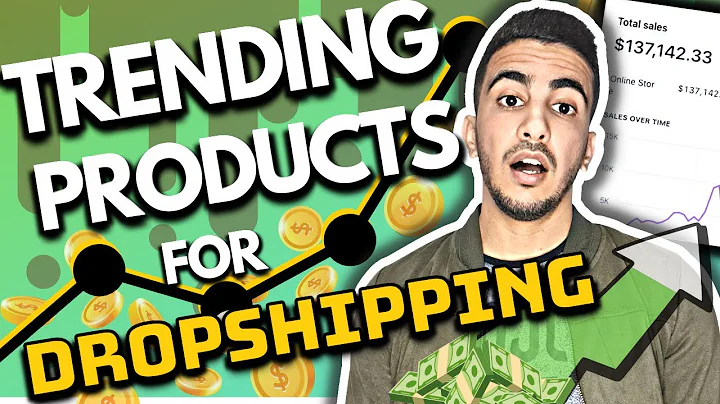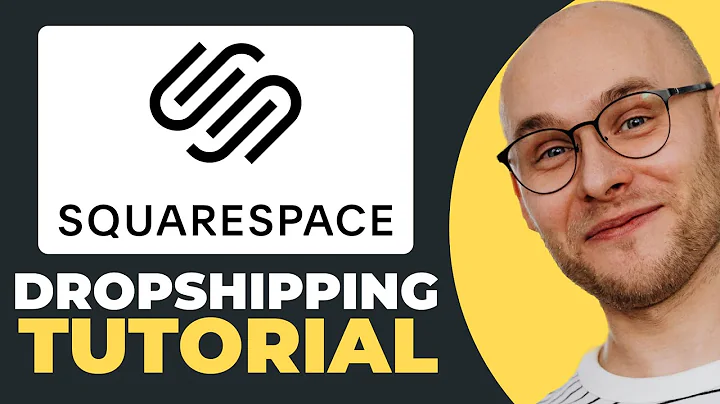Scale Your E-commerce Store and Maximize Profits
Table of Contents
- Introduction
- Daily Sales Analysis
- In-depth analysis of daily sales and profits
- Strategies to increase profit margins
- Scaling Phases
- Testing phase
- Scaling phase one
- Scaling phase two
- Other scaling strategies
- Ad Account Strategies
- Importance of understanding numbers
- Surfing budgets
- Throttling campaigns
- Analyzing campaign performance
- Increasing budgets and scaling
- Achieving Sales Target
- Setting daily sales goals
- Calculating required ad spend
- Monitoring campaign performance
- Adjusting budgets and campaign settings
- Sample Campaign Setup
- Step-by-step guide to creating CBO campaigns
- Optimization techniques
- Conclusion
How to Scale Your E-commerce Store and Maximize Profits
Welcome to this guide on scaling your e-commerce store and maximizing profits. In this article, we will take a deep dive into the strategies and techniques used to increase sales and profit margins. We will analyze daily sales data, discuss different scaling phases, and provide practical tips for managing your ad account effectively. By the end of this article, you will have a clear understanding of how to scale your store to new heights and achieve your sales targets.
Introduction
Scaling an e-commerce store requires careful planning and execution. It involves analyzing sales data, optimizing ad campaigns, and implementing strategic scaling phases. In this article, we will explore the progressive steps to take in order to scale your business successfully. But before diving into the details, let's begin by analyzing the daily sales and profits of an existing store.
Daily Sales Analysis
To determine the effectiveness of your scaling strategies, it is essential to analyze daily sales data. By examining the numbers, you can understand the impact of your marketing efforts and identify areas for improvement. In the case study provided, the store experienced significant growth, with daily sales ranging from a few hundred dollars to several thousand dollars. However, the focus is not only on sales but also on profitability.
In e-commerce, it's crucial to consider profit margins rather than just revenue. For example, a store might generate high sales but have low-profit margins due to high advertising costs or low average order values. Therefore, it's important to calculate profit margins accurately and find ways to increase them while scaling the business.
Scaling Phases
Scaling an e-commerce store involves different phases, each with its own strategies and objectives. Let's explore the key phases and how they contribute to the overall scaling process.
Testing Phase
The testing phase is an essential step in determining the viability of a product and optimizing advertising campaigns. It typically involves running a single campaign with a budget of $100 per day using campaign-based optimization (CBO). The goal here is not immediate profitability but rather to gather data, improve pixel strength, and identify winning products.
During this phase, it is advisable to use broad or automated targeting to reach a wider audience. The campaign should be run for one to three days, and the focus should be on metrics such as click-through rate, cost per click, and overall engagement. By testing multiple products and targeting options, you can identify winners that show potential for scaling.
Scaling Phase One
After identifying a profitable product during the testing phase, it's time to move into scaling phase one. In this phase, the goal is to increase ad spend and reach a larger audience. Five CBO campaigns with a budget of $500 per day are typically launched, each with ten ad groups and three creatives per ad group.
These campaigns can be divided between automated targeting and broad targeting. The budget is scheduled to increase at specific times throughout the day, effectively doubling the budget at 9 AM, 3 PM, 6 PM, and 8 PM. This strategy allows for continuous growth in ad spend, maximizing reach and potential sales.
Scaling Phase Two
Once scaling phase one is successful, it's time to move into scaling phase two. In this phase, the budget is controlled at the ad group level, allowing for even more precise targeting and optimization. Similar to scaling phase one, five CBO campaigns are launched with a budget of $600 per day each.
These campaigns are run until 9 AM, at which point underperforming ad groups are turned off, and the remaining ad groups' budgets are increased. This process is repeated throughout the day, with budgets being doubled at regular intervals. By controlling the budget at the ad group level, you can effectively allocate resources to the most profitable segments.
Other Scaling Strategies
While the testing phase and scaling phases one and two are effective strategies, there are other scaling methods worth exploring. These strategies include implementing profit multipliers, lowering the cost of goods, and increasing average order value. By continually analyzing data and experimenting with different techniques, you can further optimize your scaling efforts and maximize profitability.
Ad Account Strategies
Effectively managing your ad account is crucial to the success of your scaling endeavors. Let's discuss some key strategies and best practices for optimizing your ad account.
Importance of Understanding Numbers
To make informed decisions and effectively scale your store, it is crucial to understand your numbers. Analyzing key metrics such as cost per acquisition, click-through rate, and conversion rates allows you to identify profitable campaigns and optimize underperforming ones. By keeping a close eye on your numbers, you can make data-driven decisions that contribute to overall growth and profitability.
Surfing Budgets
Surfing budgets is an effective strategy for controlling ad spend and maximizing reach. By gradually increasing campaign budgets throughout the day and doubling them at specific intervals, you can ensure continuous growth in reach and potential sales. Additionally, adjusting budgets based on performance metrics allows you to allocate resources where they are most effective, optimizing your advertising budget.
Throttling Campaigns
Throttling campaigns involves controlling the budget at the ad group level, allowing for more precise optimization. By monitoring performance metrics such as cost per acquisition and click-through rate, you can identify underperforming ad groups and turn them off. This ensures that resources are allocated to the most profitable segments, maximizing overall ad spend efficiency.
Analyzing Campaign Performance
Regularly analyzing campaign performance is essential to identifying trends and optimizing your advertising strategies. By closely monitoring metrics such as click-through rate, cost per click, and return on ad spend (ROAS), you can make data-driven decisions that contribute to overall profitability. Continuously testing and iterating on your campaigns based on performance insights allows you to refine your targeting and creative strategies, further improving results.
Increasing Budgets and Scaling
As your store grows and becomes more profitable, it's crucial to reinvest in advertising and scale your campaigns. By increasing campaign budgets and scaling successful ad groups, you can reach a larger audience and maximize sales potential. However, it's essential to carefully monitor performance and adjust budgets accordingly to maintain profitability.
Achieving Sales Target
Setting ambitious sales targets and working towards achieving them is crucial for scaling your e-commerce store. To achieve your desired sales target, you need to calculate the required ad spend and continuously monitor and optimize your campaigns.
To calculate the required ad spend, consider your average order value, profit margin, and desired number of orders. By multiplying the number of orders required to reach your sales target by the cost per order, you can determine the minimum ad spend needed. Continuously monitor campaign performance, adjust budgets, and optimize targeting to maximize sales while maintaining profitability.
Sample Campaign Setup
To provide you with a practical example, let's walk through the setup process for a sample CBO campaign. This will give you insights into how to create effective campaigns and optimize them for success.
- Start by creating a Campaign Based Optimization (CBO) campaign with a budget of $100 per day.
- Use the website conversions objective and choose the appropriate pixel.
- Select automated targeting or broad targeting to reach a wider audience.
- Duplicate the ad group nine times to have ten ad groups in total.
- Create three creatives for each ad group, providing a variety of options and testing different visuals and copy.
- Schedule the campaign to start at 6 AM the next morning for maximum impact.
- Monitor performance metrics such as click-through rate, cost per click, and conversion rate to gauge campaign success.
- Adjust budgets and allocate resources to the top-performing ad groups to maximize sales and profitability.
By following these steps, you can create effective campaigns that generate results and contribute to the overall scalability of your e-commerce store.
Conclusion
Scaling an e-commerce store requires a strategic approach, careful analysis of data, and continuous optimization. By analyzing daily sales and profit margins, implementing scaling phases, optimizing your ad account, and setting ambitious sales targets, you can successfully scale your e-commerce business and maximize profitability. Continuous monitoring, testing, and optimization are key to long-term success in scaling your store.















